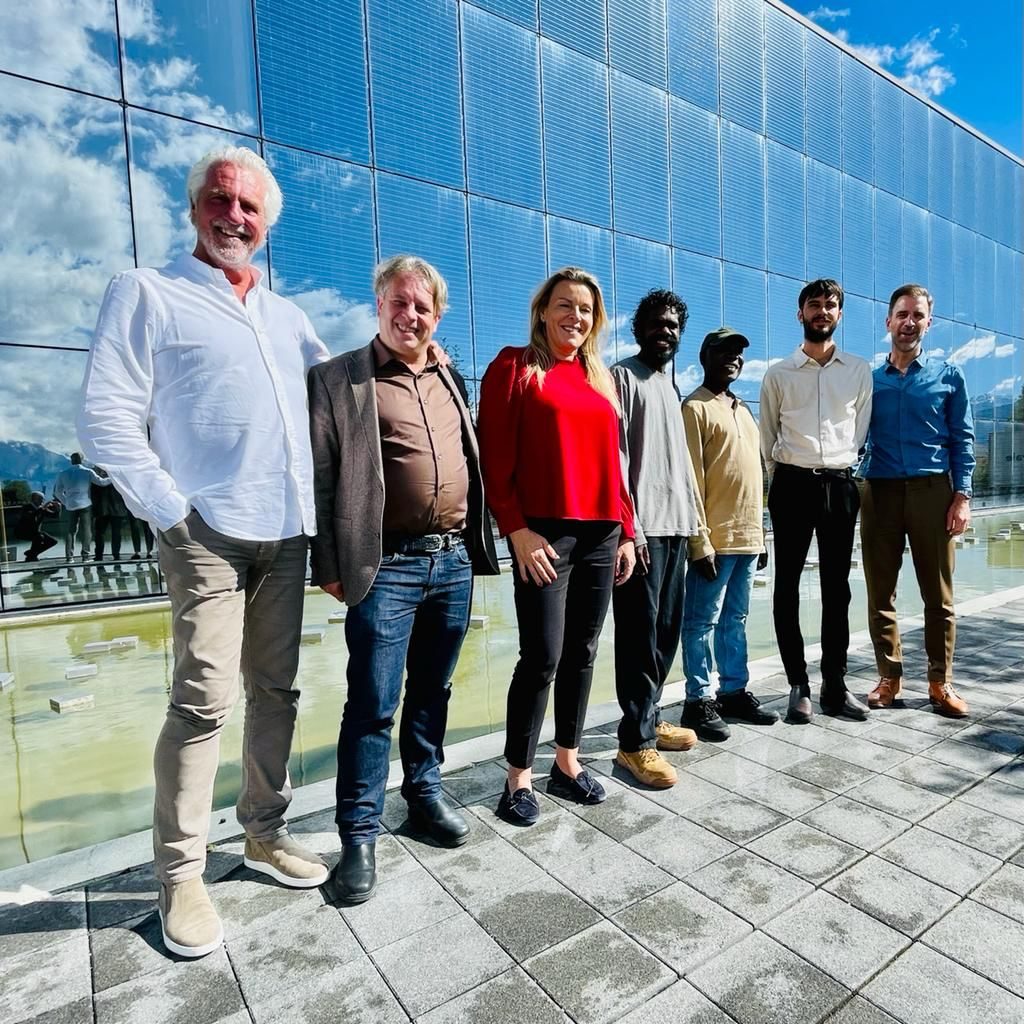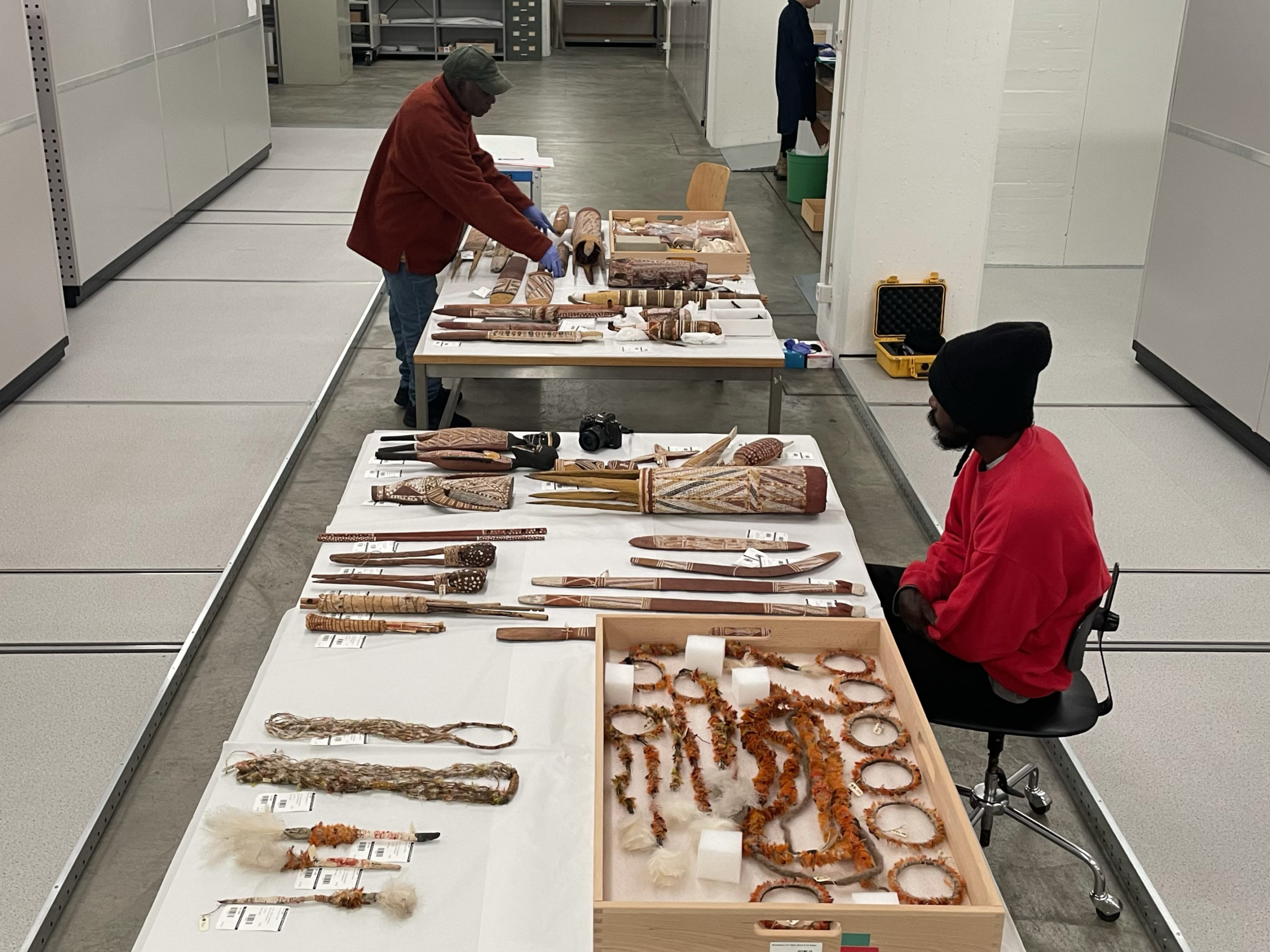In September this year Milingimbi Art and Culture’s Djalkiri Keeping Place travelled to Musée du Quai Branly in Paris, and Museum der Kulturen in Basel, Switzerland, to visit historical Milingimbi works and strengthen our relationships with these caretakers of our djalkiri – the cultural and legal foundations such as gamunuŋgu (clan designs) and other maḏayin (secret sacred ceremonial objects) left to us by our ancestors.
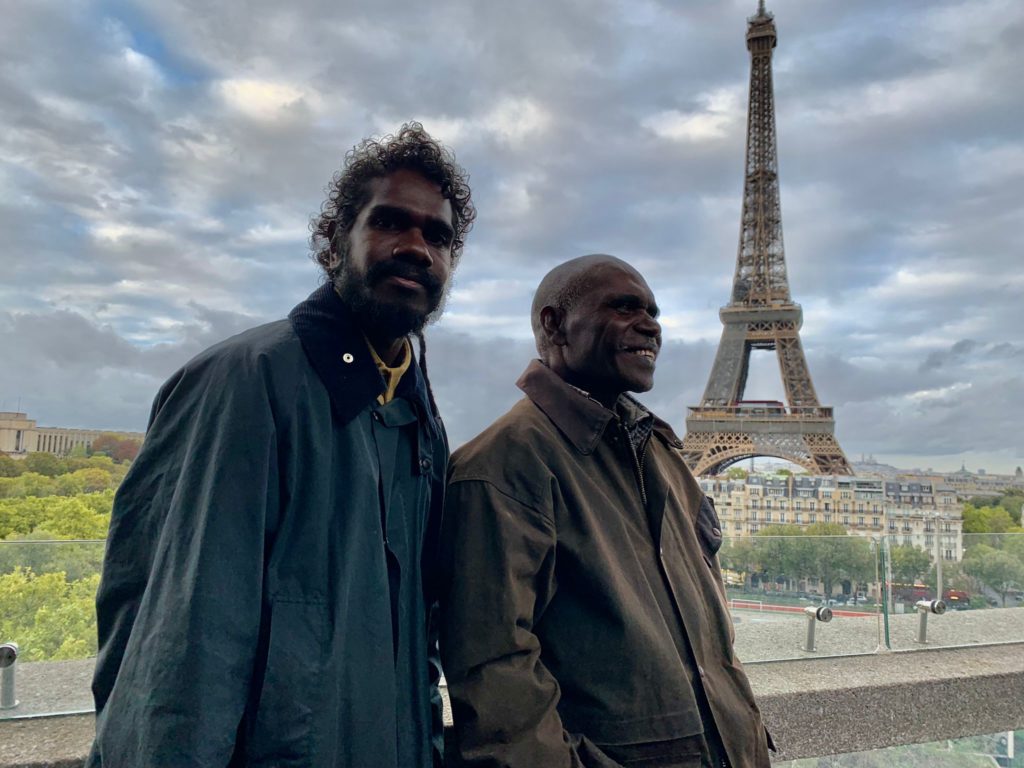
“This trip, it’s all about djalkiri. We shared our paintings, we shared our stories, we gave
them our gifts. Now we are connected because our paintings and our stories come from the
land, they come from us”, reflected Leonard Bowayŋu, senior artist and cultural leader for
the Gorriyindi clan, who led the travel party to Europe.
For Djalkiri’s first international expedition, Leonard was accompanied by Collections
Coordinator Max Moon and emerging leader Zac Yarraŋ Mälarra. Leonard and Zac are märi-gutharra (maternal grandparent-grandchild), which is an important kinship relationship that involves significant responsibility to care for one another, pass on knowledge and share
ceremonial responsibilities.
On return to Milingimbi Zac reflected, “It was special to do this with Leonard. I felt strong
being with him. He taught me about the paintings and showed me the way, showing me my
connections to all the different clans, their paintings and the songs we share.
Leonard shared the sentiment and expressed the value of activities that enabled Yolŋu learning structures. “I was so proud of Zac. He is strong, talking and sharing… He knows [is knowledgeable]. He will be our leader.”
As Milingimbi representatives, the men’s itinerary included giving public presentations
at the Australian Embassy in Paris and Foundation Opale in Switzerland, where they
explained aspects of Yolŋu law and culture and spoke about the importance of Djalkiri’s
work in reconnecting Yolŋu with the parts of their cultural heritage now kept in faraway
places. While viewing works collected from Milingimbi from the 1930s to the 1960s, the men identified several restricted works that are related to the high law ceremonies of ŋärra and other senior initiations.
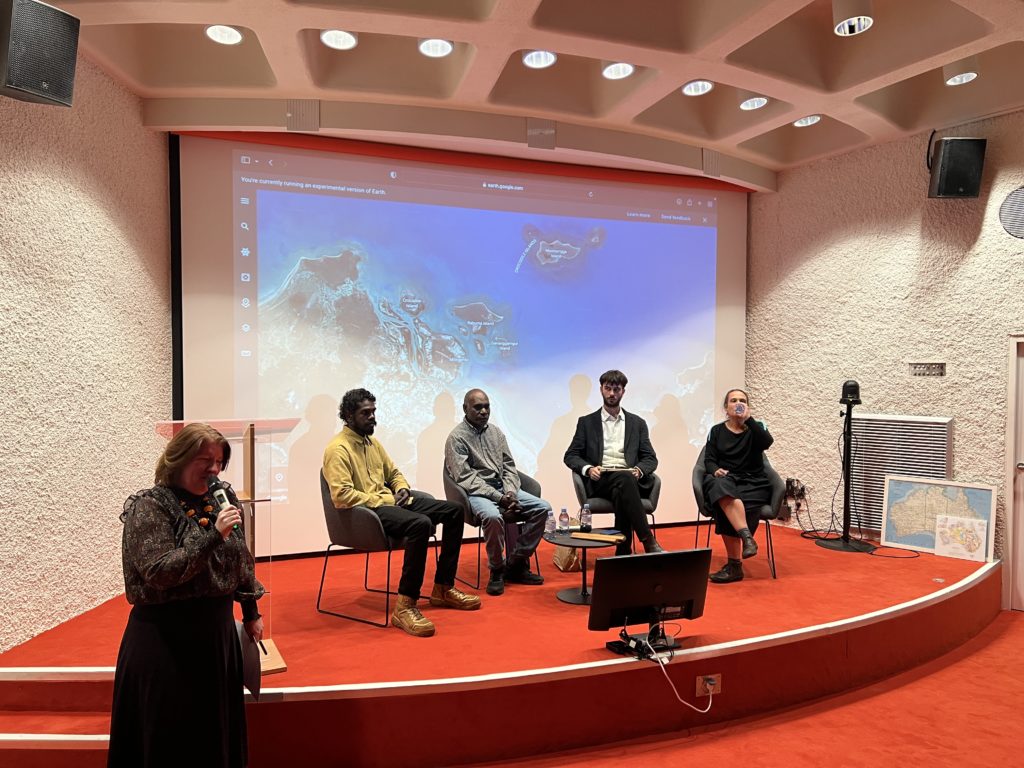
“If those things were here, it would be ŋärra. People would be dancing and singing sacred
songs. There would be law. We know [museum staff] are trying, but they must listen to us.
We are doing them a favour to share our knowledge”, said Leonard.
While the history of institutional collections of Indigenous material culture is complex, we are now fortunate to have a strong record of our djalkiri stored within the quiet rooms of museums and galleries around the world. Safely packed, stored and numbered, they lie asleep waiting in the darkness ready to be reawakened.
The Djalkiri Keeping Place engages institutions in these ways to bring our djalkiri back into the light, not only by learning how to work directly with Yolŋu to better care for and and appropriately curate their collections, but through the return of digital images of these works, and other recorded histories like photographs and audio recordings.
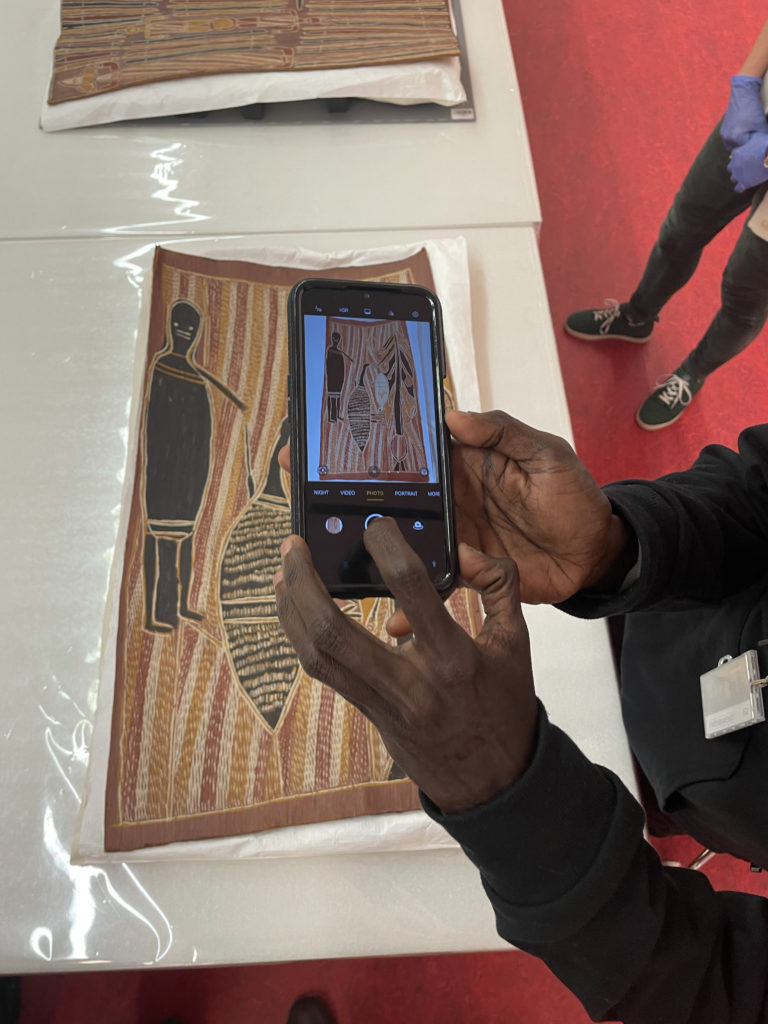
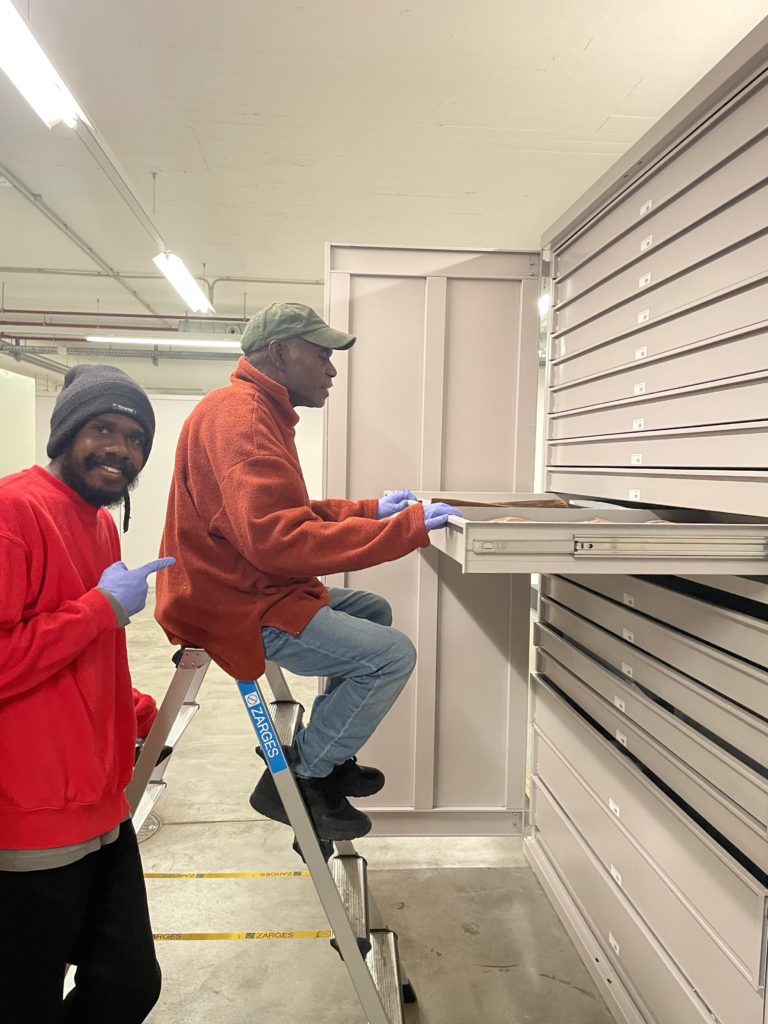
This trip followed our 2021 collaborative exhibition with Musée du Quai Branly; Gapu Guḻarri: Yothu Yindi. It was made possible by funding from the Australian Government’s
Australian Now program supported by the Department of Foreign Affairs and Trade, and
the Tim Fairfax Family Foundation. We kindly thank Leonard Bowayŋu and Zac Yarraŋ Mälarra for their time travelling abroad away from their families and the knowledge they shared, and acknowledge the staff at Quai Branly and Museum der Kulteren Basel for supporting our visits.
Additional thanks to Harriet O’Malley, Director of Public Diplomacy Australian Embassy Paris, and to Jessica De Largy Healy, Research of Ethnology Comparative Sociology at Paris Nanterre University for her ongoing support of Milingimbi Art and Culture and Djalkiri Keeping Place.
